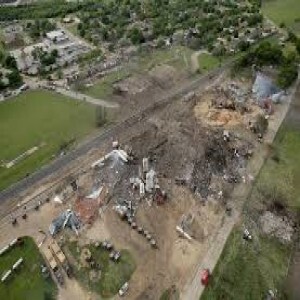

On this day in labor history, the year was 2013.
That was the day the West Fertilizer Company in West, Texas caught fire and exploded, killing 15 and injuring more than 260.
Of those killed, 12 were emergency responders, many from local voluntary fire departments.
Three others were nearby residents.
40 to 60 tons of ammonium nitrate detonated at the fertilizer distribution facility.
It damaged more than 150 nearby buildings, including schools, residences and a nursing home.
It also damaged key city water supply infrastructure.
The Chemical Safety Board issued a number of findings and recommendations in its final report of January 2016.
Heat from the initial fire likely caused the ammonium nitrate to explode as it was stored in combustible material.
The facility had no fire detection or sprinkler systems and had not been inspected by OSHA since 1985.
West’s previous insurer did conduct inspections and dropped the company over its lack of a positive safety culture and its refusal to clean up several electrical hazards.
The Board also found local fire departments lacking in incident command systems and proper training in multiple areas.
The explosion revealed the lack of zoning regulations in many cities like West, which allowed for the construction of residences, schools and commercial buildings near such hazardous sites.
Recently, the Bureau of Alcohol, Fire and Tobacco ruled the incident an act of arson.
Former OSHA official, Jordan Barab argues there is no evidence of arson and regardless, the facility exploded due primarily to improper storage and management of combustible material.
He notes the BATF conclusion served to fuel industry opposition to President Obama’s Executive Order 13650, improving safety at Chemical facilities.
The EPA’s Scott Pruitt recently granted a 90-day stay of the final rule.
More Episodes
All Episodes>>You may also like
Creat Yourt Podcast In Minutes
- Full-featured podcast site
- Unlimited storage and bandwidth
- Comprehensive podcast stats
- Distribute to Apple Podcasts, Spotify, and more
- Make money with your podcast











